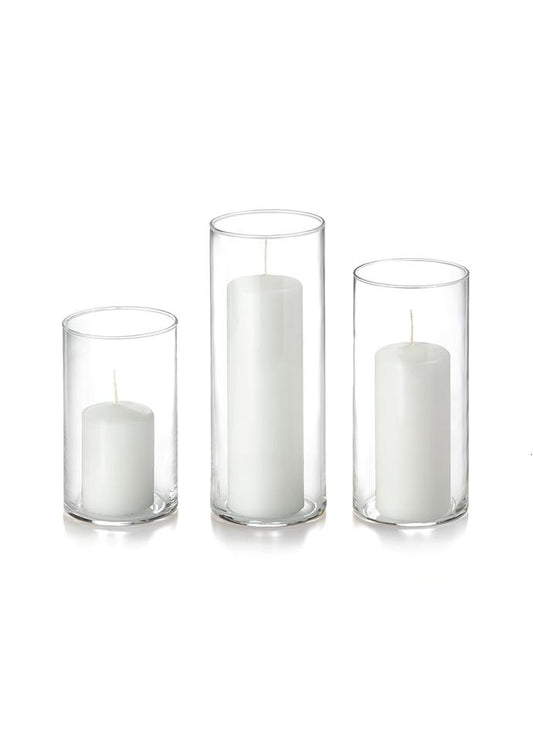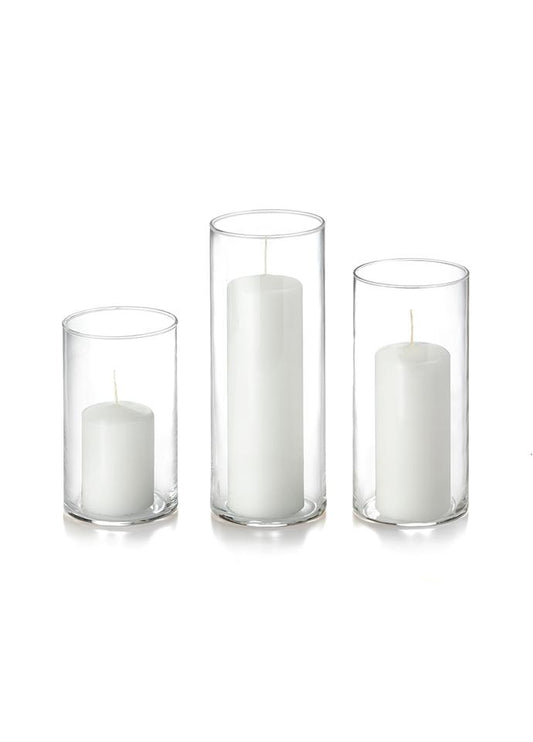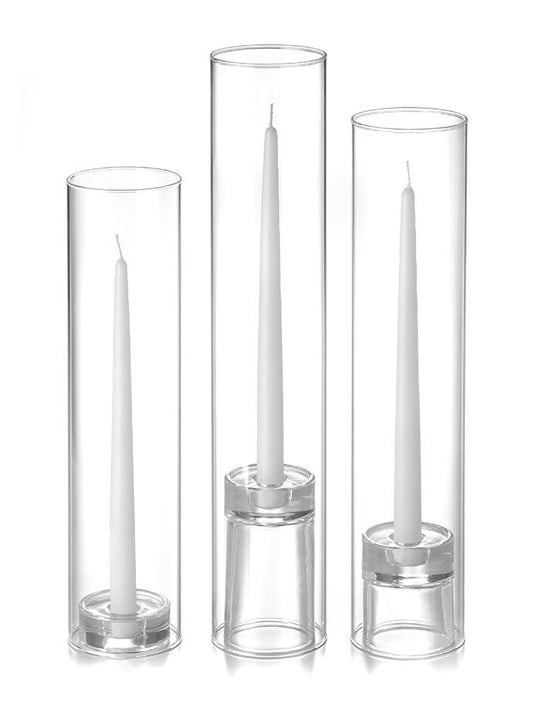Safety Instructions
Never leave a burning candle un-attended.
Keep away from pets and children.
Avoid burning candles near combustible materials.
Candles should always be burned in proper candle-holders or bases, and should be two and half inches apart from each other when burning outside a holder. Avoid burning all our pillar candles in any glass holder unless they are specifically sold as a set.
When blowing out a candle, hold your finger in front of the flame and blow at it. The air will flow around the finger and extinguish the candle from both sides. This will prevent hot wax from splattering.
Extinguish candles when they get within 2 inches of their holders or decorations.
How Are Candles Made?
While modern candle-making processes vary, most candles are made through the timeless process of placing a cotton wick into wax which is then molded, dipped, extruded, pressed, rolled, drawn or filled into a desired shape and size.
Does the Industry Have Standards for Candles?
Domestic candle manufacturers have a long tradition of making high quality, long-lasting and safe candles. National Candle Association members – manufacturers and suppliers – are working with the American Society for Testing and Materials (ASTM) to implement voluntary standards for candles. Both Neo-Image Candlelight and North American Candle are proud members of the National Candle Association.
What are the typical ingredients in a candle?
A candle consists primarily of wax and a wick. Many candles also contain dyes or pigments for color and fragrances for scent as well as other minor ingredients.
Is it safe to burn candles in a house with children?
Safety, including issues such as children’s health, is a top priority for National Candle Association members. That is why our organization adopted a voluntary ban on lead wicks and supports the removal of candles with lead wicks from store shelves.
What is soot?
Soot is a natural by-product of incomplete combustion and is comprised primarily of carbon particles. Soot can be caused by fireplaces, stoves, furnaces or even from cooking. If candle wicks are kept trimmed and there is proper ventilation with no drafts, there should be no incomplete combustion and, therefore, no sooting from candles.
In any house, there are literally millions of airborne particles that can adhere to surfaces. These particles include a wide variety of naturally-occurring substances such as dirt, dust and pollen. If windows are open, particles may come from car or truck exhaust, barbecues and burning leaves. Due to natural airflow, these particles tend to adhere to ceilings, walls and window treatments. Because of static electricity, they also tend to collect on or near electrical appliances, TV or computer screens.
Do scented candles produce more soot or smoke?
Not necessarily. While unscented wax may tend to burn more efficiently in general, it is the size of the wick and flame that makes the most difference, not the fragrance. Candles produced using appropriate raw materials should burn cleanly if used properly.
Do burning candles cause air pollution?
When candles are burned properly, they pose no known health risk.
What kind of label information is required to be placed on candles?
No safety information is required on candle labeling. However, most candle manufacturers voluntarily place safety and use instructions on their candles. The National Candle Association is working with the American Society of Testing and Materials (ASTM) to create voluntary labeling standards for the industry.
Information Courtesy of The National Candle Association
Tips to Extend the Life of your Candles
Avoid burning taper candles near any drafts. Avoid putting candles in drafts to prevent rapid and uneven burning and excessive dripping. Candles will fade if left in the light for an extended period of time.
Avoid burning pillar candles within 2 1/2 inches of each other.
Keep wicks trimmed to one half inch. Long or crooked wicks cause uneven burning and dripping. Keep votive wicks centered and trimmed to 1/4” while burning to prevent breaking the glass.
If a wick becomes too short to light, carve away enough wax to expose the fresh wick, then trim 1/4” off the top of the candle and burn the candle to reform its appearance (tapers are the exception to this rule.)
Candles refrigerated before using will burn more slowly and evenly. Wrap in foil or plastic before refrigeration to prevent wicks from absorbing moisture.
Before a party, light and extinguish the candles. They’ll light more quickly and easily later.
What is the Best Way to Store Candles?
Candles should be stored in a cool, dark, dry place and, for tapers, in a flat position to prevent warping. When stored properly, candles can be enjoyed for years.
Candle Cleaning
Clean solid candles with a piece of nylon or use a touch of salad oil on a soft cloth. Remove wax from holders by running very hot water over them. To remove wax from washable fabrics, scrape off excess wax and run boiling water through the material.
Are Candles Safe to Use?
Candles are safe when burned properly and responsibly, and according to manufacturers’ directions. When burning candles, consumers should always follow these simple, common sense steps: never leave a candle unattended keep candles out of the reach of children and pets trim wicks prior to each use and keep trimmed keep candles away from drafts, vents and flammable objects extinguish a candle that smokes (check instructions before re-lighting) extinguish candle when 1/2” of wax remains in a container use only candle holders that have been manufactured for use with candles keep matches and other debris out of the candle extinguish the flame if it burns too close to the container or holder do not move a glass container when the wax is liquid
Are candle wicks made of lead?
The majority of wicks manufactured today in the U.S. are made of 100 percent cotton – with no metal core. Those few wicks with metal are typically zinc-core wicks. All of these wicks are safe.
Even though the U.S. Consumer Product Safety Commission (CPSC) determined in 1974 that leadcore wicks do not present a health hazard, the National Candle Association’s members voluntarily agreed to stop using lead wicks. Companies belonging to the National Candle Association make about 95 percent of the candles manufactured in the United States today.
It is possible that a small percentage of imported candles on the market today contain lead-core wicks. However, the National Candle Association and the Consumer Product Safety Commission have taken strong action to remove candles with lead-core wicks from store shelves. This will help ensure that all candles on the market today use safe wicks.
How can one tell whether a candle has a lead-core wick?
A consumer can determine if a candle has a lead-core wick by using this simple test: Rub a piece of paper on the tip of an unused metal wick. A lead-core wick will leave a gray pencil-like mark, while zinc or tin will not.
It is important for consumers to know that wicks made with cotton, paper, zinc, or non-metallic materials are safe.
What kind of quality control testing do candle manufacturers perform?
Each NCA member company has its own quality control procedures. Most member companies perform methodical testing of their products to ensure optimum performance.













